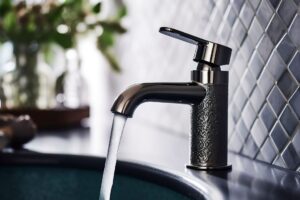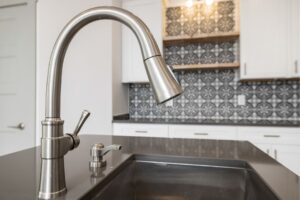Introduction
Ever been in the market for a new kitchen faucet and stumbled across HGN? They’re known for stylish designs at wallet-friendly prices. But lately, there’s a buzz that has homeowners worried lead warnings on some HGN kitchen faucets packaging. That’s enough to make anyone pause mid-purchase, right? Let’s dig into what’s really going on with these Hgn Kitchen Faucets Lead Warning and how you can protect yourself and your family.
Why Worry About Lead in Faucets?
Health Risks of Lead Exposure

Lead isn’t something you want near your food or drink. Even small amounts can be harmful over time, especially because it accumulates in the body. It can mess with your nervous system, lower IQ in kids, and even contribute to kidney damage in adults. Imagine cooking pasta with water that’s been slowly leaching lead from your faucet that’s a chilling thought.
Vulnerable Populations
The biggest worry is for babies, children, and pregnant women. Developing brains are incredibly sensitive to lead. That’s why experts say there’s no safe level of lead exposure for children. If you’ve got little ones who love filling their sippy cups straight from the tap, this should be on your radar.
What Is the HGN Brand?
Reputation and Market Presence
Hgn isn’t some giant like Moen or Delta, but it’s a recognizable name on Amazon and other online marketplaces. They’re popular among DIYers looking to upgrade their kitchens without breaking the bank. The company often touts modern styling, brushed nickel finishes, and features like pull-down sprayers all at a budget-friendly price.
Product Range Overview
Their line includes single-handle kitchen faucets, pull-out models, and commercial-style designs that mimic high-end brands. That range attracts a lot of buyers—but it’s precisely those buyers who want to know if the low price hides a dangerous compromise.
Lead in Plumbing Fixtures: A Hidden Threat
How Lead Gets Into Water
Here’s the kicker: even “lead-free” plumbing fixtures can legally contain small amounts of lead. During manufacturing, lead might be used in brass or other alloys to make casting and machining easier. When water sits in the faucet overnight, it can pick up traces of lead and deliver them straight to your glass.
Regulations and Standards
In the U.S., there are rules limiting lead content in plumbing. The 2011 Reduction of Lead in Drinking Water Act limits the amount of lead in any surface that comes into contact with water to no more than 0.25%. Sounds reassuring, right? But there’s still wiggle room.
NSF/ANSI 61 Certification
To get the NSF/ANSI 61 certification (a kind of seal of approval), faucets have to meet limits for how much lead they leach during testing. But not every faucet on the market has this certification. Without it, there’s no real guarantee of safety.
Reports of Lead in HGN Kitchen Faucets

User Complaints and Reviews
Search online, and you’ll see some unsettling reviews. Customers have posted images of California Proposition 65 warnings on HGN faucet boxes. These labels indicate the product may contain lead, a substance linked to cancer and reproductive health risks. That’s not exactly the cozy feeling you want when remodeling your kitchen.
Testing Results and Case Studies
While there’s no massive recall on HGN faucets for excessive lead, independent testers have raised concerns about imported, inexpensive fixtures in general. Some studies have shown that cheap faucets from lesser-known brands can leach higher levels of lead than certified models.
Interpreting Lead Warnings on Packaging
California Proposition 65
If you see a Prop 65 label, don’t panic but don’t ignore it either. California’s Proposition 65 requires businesses to warn if a product contains chemicals linked to cancer or reproductive harm. Only a small amount is enough to mandate that warning label. If a faucet goes even slightly over the limit, the manufacturer is required to warn buyers about it.
What Does the Warning Really Mean?
It doesn’t prove the faucet is unsafe in normal use, but it does mean there’s some risk. Think of it like a “caution: wet floor” sign it’s there to alert you to potential danger. For some homeowners that’s reason enough to look for alternatives.
How to Tell if Your Faucet Has Lead
Visual Clues and Labels
A clear hint is spotting the Prop 65 warning right on the packaging. But you can also check for certifications. Look for NSF/ANSI 61 or “Lead-Free” markings that comply with the Reduction of Lead in Drinking Water Act. No mark? That’s a red flag.
Home Water Testing Kits
If you’re already using an HGN faucet and feeling worried, you can test your water. At-home lead testing kits won’t break the bank and are simple to handle. They give you a quick look at exactly what’s flowing from your faucet. If you find elevated levels, you know it’s time to act.
Steps to Reduce Lead Exposure
Using Filters
Good news: you don’t have to rip out your whole kitchen immediately. Certified water filters, like those with NSF/ANSI 53 or 58 ratings, can remove lead. Faucet-mounted filters, pitcher filters, and even under-sink systems can help.
Flushing Techniques
When water has been idle in the pipes for a long time, it’s a good idea to run it for 30 seconds to a minute before filling a pot or glass. It’s simple and free.
Replacing Fixtures
Long-term? If you discover your faucet is the culprit, replacing it with a certified lead-free model is the safest bet. It’s an investment in your family’s health.
Alternatives to HGN kitchen Faucets
Certified Lead-Free Brands
Well-known brands such as Moen, Kohler, and Delta usually maintain stricter quality standards and often feature NSF/ANSI 61 certification. They might have a higher price tag, but they offer extra reassurance.
What to Look for When Shopping
Check listings and boxes for “Lead-Free” or NSF/ANSI 61 certification. Don’t rely solely on glossy photos or flashy ads make sure you check the details carefully. It’s also smart to speak up and get answers to any questions before making a purchase.
Industry Response and Accountability
Manufacturer Disclosures
Some manufacturers slap a Prop 65 warning on everything shipped to California to avoid legal risk, even if actual exposure is minimal. Critics say this is lazy and confusing. Others argue it’s the only way to be sure customers are informed.
Retailer Responsibility

Online marketplaces like Amazon are under pressure to verify product safety claims. But with thousands of sellers, it’s tough. That’s why shoppers need to be vigilant.
Final Thoughts
At the end of the day, Hgn Kitchen Faucets Lead Warning might not be the right choice if you’re worried about lead. Those Prop 65 labels aren’t there for decoration they’re a real heads-up. While they may comply with basic regulations, that’s not the same as being guaranteed lead-free. If you want peace of mind, choose certified alternatives, use filters, and stay informed. After all, the water you drink should nourish you, not poison you—even a little.
FAQs
Q1: Are all HGN faucets unsafe because of lead?
Not necessarily. The warning indicates there is some risk of lead exposure, not that every faucet is dangerously contaminated. But if you want to be sure, look for certified lead-free models.
Q2: How can I know if my faucet is leaching lead?
Use a home water testing kit. They’re budget-friendly, simple to operate, and provide straightforward results.
Q3: What does the Prop 65 warning mean for me if I don’t live in California?
It’s still useful information. Even if your state doesn’t require the label, the warning suggests the manufacturer acknowledges potential lead exposure.
Q4: Can filters really remove lead from my water?
Yes! Approved filters are highly effective at cutting down or removing lead entirely. Look for NSF/ANSI 53 or 58 certifications.
Q5: Should I replace my HGN faucet right away?
It depends on your risk tolerance and test results. If your water tests clean, you might wait. If lead is detected, swapping out the faucet is a wise decision.
